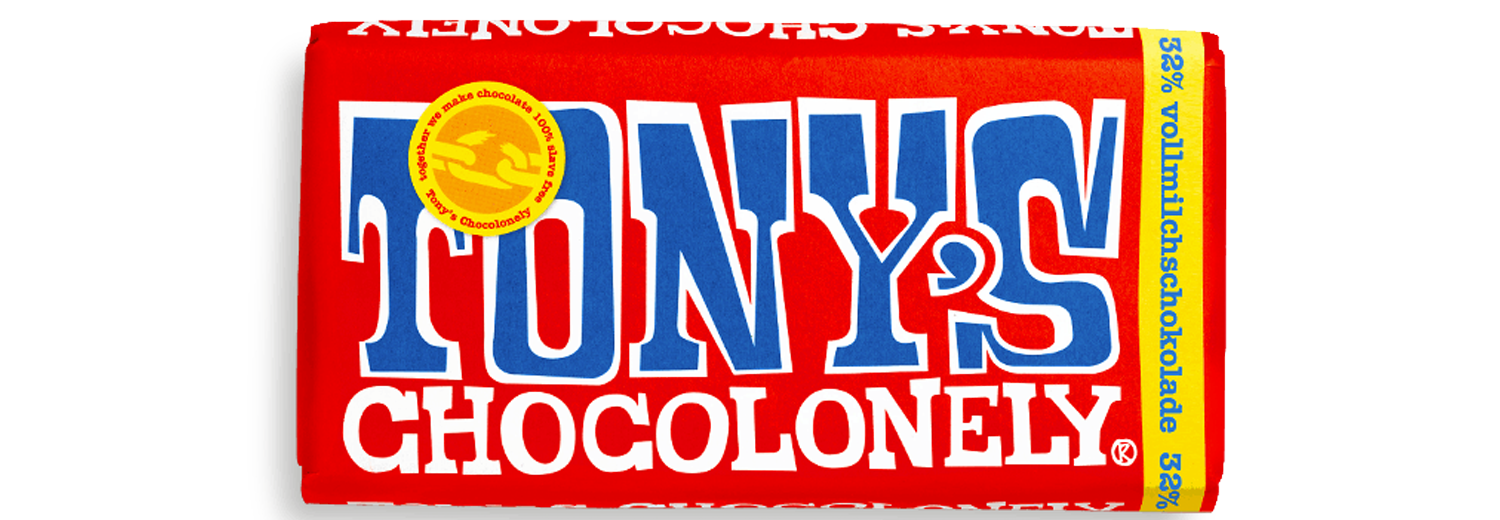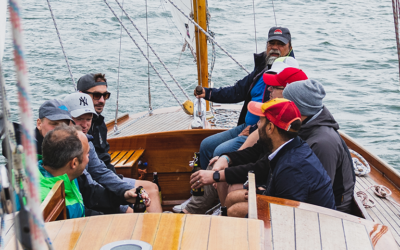From chocolate to a strong brand: Tony’s Cocolonely – 100% free from modern slavery

The pandemic has heightened our awareness of sustainability. Many brands have also recognized this for themselves and have launched corresponding advertising campaigns. Planting trees and climate neutrality par excellence. Consumers quickly expose such actions that do not come from genuine conviction. One thing in advance: sustainability is much more than renewable raw materials. Rather, sustainability – in accordance with the Sustainable Development Goals defined by the United Nations – encompasses not only the ecological but also the social and economic pillars.
Sustainable Development Goals (SDG)
The 17 Sustainable Development Goals (SDGs) are political targets set by the United Nations to ensure sustainable development at the economic, social and environmental levels worldwide.
Pioneer in sustainability
One brand that doesn’t plant trees, yet is considered a sustainable pioneer, is Tony’s Chocolonely.
The brand was founded in 2005 by Dutch journalist Teun van de Keuken with a clear goal: To make chocolate 100% free from modern slavery. Not just our own, but any chocolate around the world. The main problem: the farmers earn so little from the cocoa bean trade that they see no other way than to exploit people themselves. To this end, the brand has set five clear principles from its core purpose that guide its actions and ensure that slave-free chocolate is possible.
The five principles of Tony’s Chocolonely
- Traceable bean origin: The origin of each cocoa bean is traceable
- Higher prices for farmers: The brand pays farmers more, based on the Living Income Reference Price developed with Fair Trade to secure farmers’ livelihoods
- Strong farmers: Tonys Chocolonelies supports farmers to organize into cooperatives and act as one
- Long-term partnerships with farmers: Contrary to the norm, farmers receive long-term contracts with price and purchase guarantees, enabling them to plan for the long term.
- Better quality and productivity: the brand trains farmers to work more efficiently and thus more profitably
Strong brand with a clear stance
All Tony’s Chocolonelies actions are derived directly from the brand’s identity and pay into the core purpose of “slave-free chocolate.” Thanks to the transparency created and the clear positioning, the brand manages to push through higher prices at retail than Milka or Rittersport, for example.
But how does Tony’s Chololonely manage to convey this identity to the consumer? Firstly, through the high level of transparency in its own communications and the “Tony’s Open Chain” initiative. This supports other chocolate manufacturers to join the principles of Tony’s Chocolonely. But the brand also makes its identity felt through the products. The boards, unlike usual, have pieces of different sizes. Because in the chocolate market, the shares of the profits are also unfairly distributed.
And with this clear attitude, Tony’s Chocolonely has managed to become one of the most successful chocolate manufacturers in the Netherlands and has successfully expanded into neighboring countries. In the meantime, the chocolate can also be found in German supermarkets.
What do we learn from this?
To be truly credibly sustainable, actionism is not enough. The sustainable pioneers of our time show that a clear positioning on sustainability is the path to success – putting sustainability at the core of one’s own organization. Ask yourself: what sustainable difference can you make with your organization? Think about all three pillars of sustainability.
Bildquelle: Rodrigo Flores on Unsplash; www.tonyschocolonely.com; www.youtube.com/watch?v=nqG4N27UHNk; www.youtube.com/watch?v=nqG4N27UHNk
Deeper insights into the “Tony’s Chocolonely” brand

Immerse yourself in ID Sustainability Brand

MarkenPraxis Blog
Combining several cultures in one Brand Identity
Developing and establishing a unifying DNA is a complex challenge, especially in globally active organizations. In this article, we show how different cultures can be brought together under one brand, by using the example of our client hep.
How we fight climate change with re-signing and clear sustainability positioning
How can we create conscientious innovation that helps slow down climate change? This was the question Christopher Spall discussed with Medinge Group during Innovation Week in Oslo.
ID Summer Camp: How trailblazing ideas and solidarity grow in nature
Growing companies need a shared identity as a clear compass. That’s why we and our long-term client EIZO Technologies went to our ID Summer Camp on Ammersee for three days.



